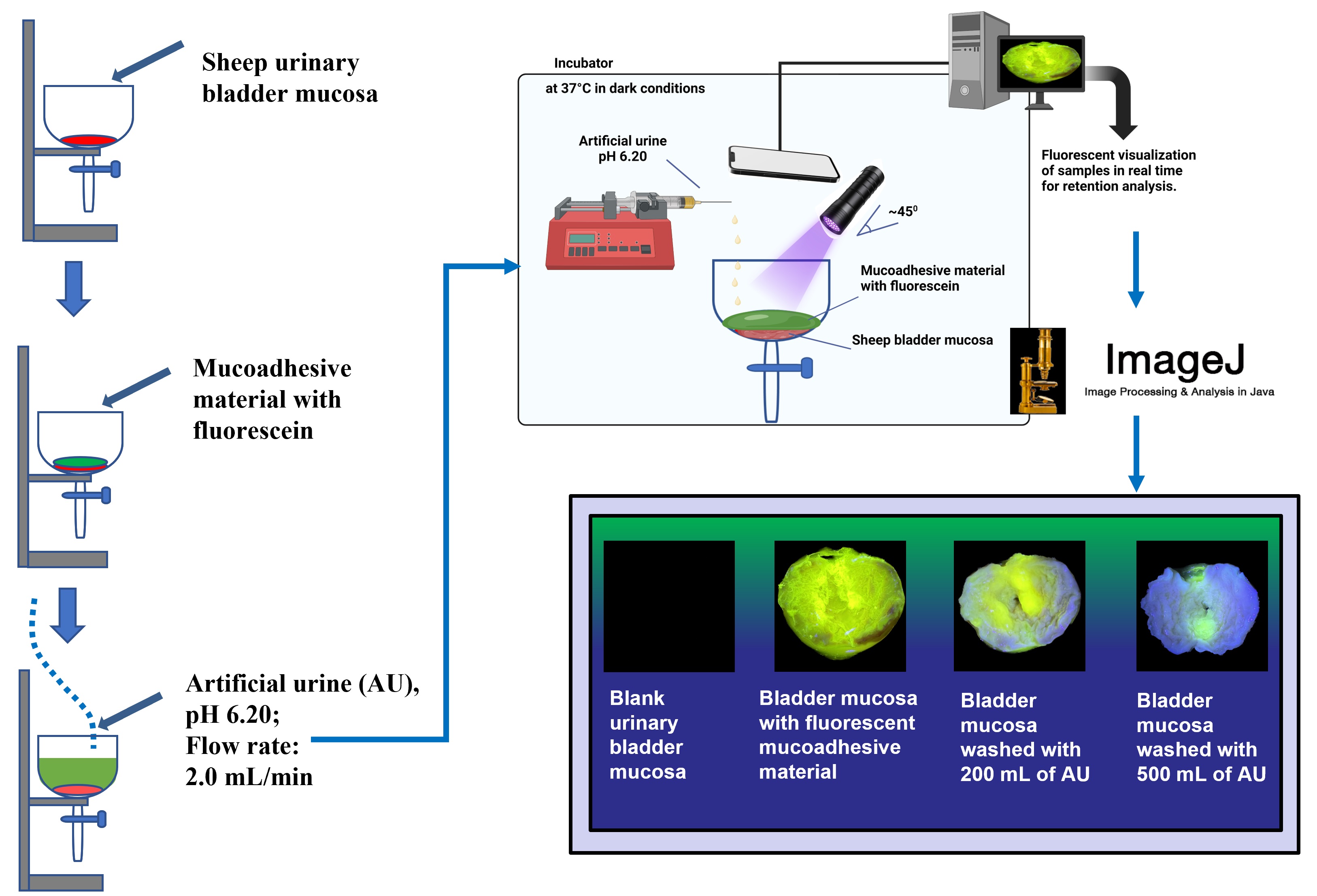Development and Investigation of Mucoadhesive Polymers Based on Chitosan for Intravesical Therapy
DOI:
https://doi.org/10.31489/2959-0663/4-24-2Keywords:
chitosan, gellan gum, Carbopol™ 940, in situ gel, mucoadhesion, release, urinary bladder, intravesical drug deliveryAbstract
Intravesical drug delivery (IDD) refers to the administration of therapeutic agents directly into the urinary bladder through a catheter. Low permeability of the urinary bladder epithelium, poor retention of the therapeutic agents due to dilution and periodic urine voiding as well as frequent catheterizations (with potential risk of infections) are the major limitations of IDD used in the treatment of bladder-related disorders, such as bladder cancer. In this work, the mucoadhesive properties of polymeric materials based on chitosan, chitosan-gellan gum, and chitosan-Carbopol™ 940 containing sodium fluorescein (NaFI) were investigated for their potential application in intravesical drug delivery. The evaluation of mucoadhesive properties was carried out using an in vitro flow-through method with fluorescent detection that simulates the interaction conditions of polymers with the urinary bladder mucosa. Additionally, the release kinetics of NaFI from polymer compositions under conditions mimicking the physiological environment of the bladder was studied using a fluorescence spectrometry. The acquired data confirm the promise of using chitosan-based mucoadhesive polymers in developing systems for intravesical drug delivery, which could significantly enhance the efficacy of IDD therapy to treat urinary bladder-related disorders.

Downloads
Published
How to Cite
Issue
Section
License
Copyright (c) 2024 Daulet B. Kaldybekov, Elvira O. Shatabayeva, Aziza A. Polatkhan, Rysgul N. Tuleyeva , Galiya S. Irmukhametova , Vitaliy V. Khutoryanskiy

This work is licensed under a Creative Commons Attribution-NonCommercial-NoDerivatives 4.0 International License.
This work is licensed under a Creative Commons Attribution-NonCommercial-NoDerivatives 4.0 International License.
Authors retain copyright and grant the journal right of first publication with the work simultaneously licensed under a Creative Commons Attribution License (CC BY-NC-ND 4.0) that allows others to share the work with an acknowledgement of the work's authorship and initial publication in this journal.



